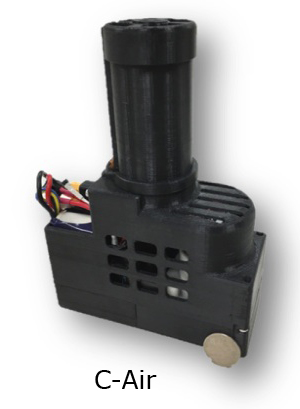Chancellor’s Professor Aydogan Ozcan’s team wins the 2016 Vodafone Wireless Innovation Project prize with mobile imaging system, C-Air.
Chancellor’s Professor Aydogan Ozcan’s team is one of the two UCLA teams to win the 2016 Vodafone Wireless Innovation Project prize. The honor is shared with Navid Amini, a research faculty member at the Stein Eye Institute at UCLA.
The annual competition held by the Vodafone Americas Foundation is in its eighth year. Beginning in 2009, it has awarded researchers who strive to solve critical current issues with mobile innovation. In fact, Ozcan also received the inaugural Vodafone Wireless Innovation Project prize in 2009. This year, three teams are chosen by the foundation out of eight finalists. Each of the UCLA teams will receive a $200,000 award for the development of their projects.
Ozcan’s winning project is a mobile imaging system, C-Air, that monitors air pollution. The cost-effective platform is able to accurately map the source and dispersal patterns of air pollution. A combination of computational imaging and mobile-sensing techniques enables the lightweight C-Air platform to operate in mid-air, producing 3D mappings from a drone. As a result, emissions from factories, airports and highways can be more easily observed.
 Ozcan said his team began working on C-Air less than two years ago. At the time, his research lab was focusing on creating new computational imagining and sensing platforms using mobile technologies. Exploring all types of applications for the technologies created by his lab, Ozcan saw environmental monitoring, especially air quality screening, as a key area where their work would make a significant impact.
Ozcan said his team began working on C-Air less than two years ago. At the time, his research lab was focusing on creating new computational imagining and sensing platforms using mobile technologies. Exploring all types of applications for the technologies created by his lab, Ozcan saw environmental monitoring, especially air quality screening, as a key area where their work would make a significant impact.
There are one graduate student (Yichen Wu) and four undergraduate students at UCLA currently on team C-Air. The mobile imaging system has already been successfully tested at UCLA and will soon be tested in field settings. Despite the acclaim it enjoys now, the birth of C-Air is not without complications.
“Rapid and accurate analysis of acquired images of particulate matter extracted from air samples is demanding,” Ozcan said. “We have approached this challenging problem by developing a smart distributed image analysis and reconstruction framework that is based on cloud computing.”
For Ozcan’s team, the Vodafone award is not simply a complimentary nod on their achievement, but also a real booster for C-Air to go on to the next level. Ozcan said the funding will help them to “field-test and deploy a cost-effective and high-throughput air-quality quantification platform for particulate matter, and address the need for accurate and on-the-spot spatio-temporal characterization of toxic emissions”. Apart from targeting regular pollution sources like highways, airports, bus stations, factories, buildings and burns, C-Air is also well-poised to facilitate instantaneous responses in the face of fires, explosions, accidents, etc..
“Furthermore, we will develop sensing payload modalities that can be attached or connected to a mobile-phone and a drone,” Ozcan said. “Working together, these mobile systems on the ground and in air will constitute a smart pollution monitoring network, enabling real-time monitoring of the evolution of pollution and its movement trends that will aid in the development of risk mitigation strategies to protect public health.”
